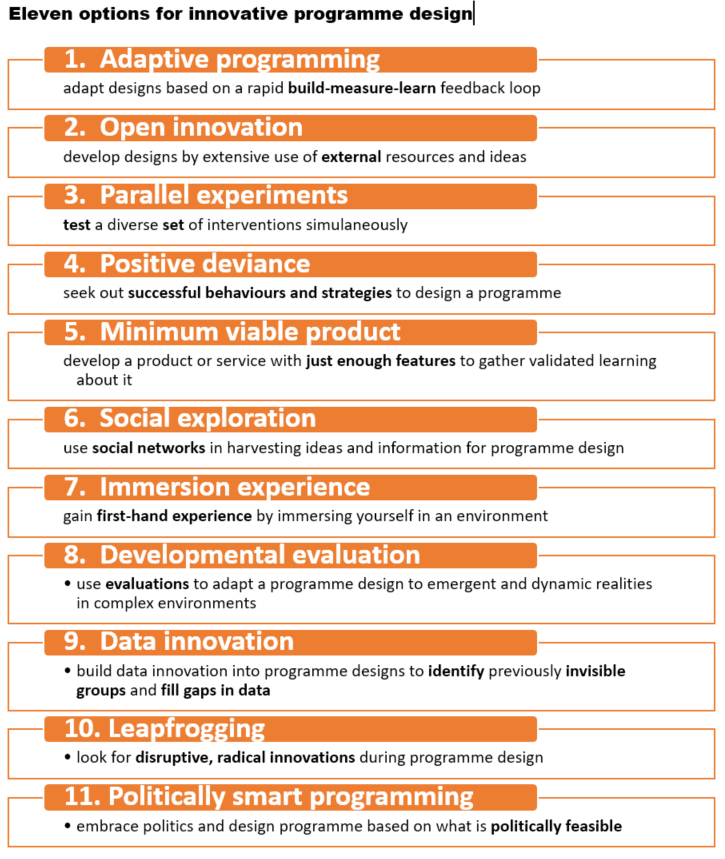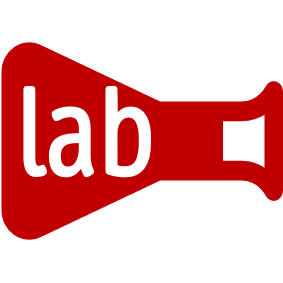It has always been clear to me: Managing for results depend to a large extent on how we plan and design programmes, services, policies and products. Further, meaningful Monitoring and Evaluations requires good planning and design. That is why this blog post looks closer at the rapidly evolving landscape of programme design.
Drivers of innovation
In my view, we have recently seen such a push for innovation in programme design for three reasons:
- Disillusion with linear models: In a complex, complicated or chaotic context, linear planning tools are ineffective. This includes such as logical frameworks and linear theories of change. If you are not yet convinced, read Ben Ramalingam’s comprehensive critique of current planning models.
- Complexity and wicked problems: Genuine progress toward sustainable development is increasingly complex: Solutions are not simple or obvious. Those who would benefit are the ones who most lack power. Those who would make a difference disengage. Too often, we overlook political barriers . Look for example at the Manifesto ‘Doing Development Differently’ manifesto from 2014. That is why programme design must increasingly cope with ‘wicked’ problems. ‘Wicked’ problems are difficult to define and deeply interconnected.
- Data revolution: The world has been – and still is – undergoing a data revolution. This has far-reaching consequences for programme design. For example, we now live in a world where 90 percent of the data out there today has been created in the last two years alone. further, every minute, more than 270,000 tweets get published worldwide. Google receives no less than 4 million search queries, and over 200 million emails are sent.
Resistance to innovation
Despite this push, development organisations and governments have mostly kept more innovative programme designs contained in ‘innovation labs’ and small pilot projects. There are significant challenges to innovative programme design. Three reasons stand out:
- Mind set: Many of these innovations require ‘unlearning’ of the traditional, linear design approach based on a chain of results.
- Rules and regulations: Many of these innovations may be difficult to carry out within the current rules and regulations for programme design and implementation.
- Donor requirements: Testing these innovations may require flexibility by the donor.
Options for programme design
In my view, governments and organisations should consider eleven options for innovative programme design in complex, complicated or chaotic settings:

1. Adaptive programming

An adaptive approach to programming requires planners to build in opportunities for active, ongoing learning that feed back into new solutions. Adaptive design requires rapid build-measure-learn loops. It is based on defining a problem, diagnosing it, designing an intervention, implementing it and testing it. It is a reaction to the more traditional, rigid development planning using linear, blue-print approaches. Adaptive programming manages risks by making ‘small bets’. Failing – and failing fast – is a must.
2. Open innovations

Open innovation refers to the extensive use of external as well as internal ideas and delivery mechanisms for programme design. It assumes that partnering with external organisations and groups is more effective in achieving results in an innovative manner. It implies that partners share both rewards and risks. Open innovation requires organisations to allow for the boundaries between the organisation and the environment to be more permeable.
3. Parallel experiments

Building an experimental approach into programme design requires a portfolio of small-scale experiments. The starting point for designing a programme that uses parallel experiments still requires the setting of an over-riding goal. However, we pursue this goal through a diverse set of plans simultaneously, each of which has the potential to evolve. This approach incorporates testing during the planning and implementation phase and tolerating failure. It is not a single ‘big bet’, but instead a diverse portfolio of experiments.
4. Positive deviance

A positive deviance approach to programme design is based on an observation: Every community has certain individuals or groups – outliers – whose uncommon behaviours and strategies enable them to find better solutions to problems than their peers. And this is despite having access to the same resources and facing similar or worse challenges. It enables the community to discover successful behaviours and strategies. Further, it helps them develop a plan of action to promote their adoption by all concerned. Since first being tried out to address child malnutrition in Vietnam in 1991, it has been applied to a whole range of problems.
5. Minimum viable products

A minimum viable product (MVP) is a product with just enough features to gather validated learning . It is deliberately imperfect. Any additional work on it beyond what was required to start learning is waste, no matter how important it might have seemed at the time. The underlying reason to develop an MVP is to empirically test assumptions and hypotheses about what works and what does not. Using MVPs is a structured way to check that you have an efficient and appropriate solution or approach before rolling it out or making a big investment in it. For details see our blog on Stop overthinking: MVPs.
6. Social exploration

Social exploration is the thoughtful and extensive use of social networks in harvesting ideas and information. It brings new, innovative ideas to programme design. The best ideas come from careful and continuous social exploration. It requires social learning, diversity and the reliance on contrarians. Rather than finding the ‘best’ people or ideas, social exploration requires us to seek out people with different views and different ideas.
7. Immersion experience

An immersion experience requires those involved in programme design to spend significant time with individuals or groups related to the inequality issue. Immersion prior and/or during the design phase can help to gain a first-hand perspective of the situation and the context and can help in identifying possible solutions.
8. Developmental evaluation

Developmental evaluation is a recent type of evaluation. Unlike most other evaluations, we can use developmental evaluation at the planning stage of a programme. At such an early stage, developmental evaluation can support the innovation development to guide adaptation to emergent and dynamic realities in complex environments. The evaluator is an embedded member of the team of an intervention.
9. Data innovation

Data innovation is the use of data sources and methods to gain a more nuanced understanding of how to approach gender inequality during the programme design phase. Existing data poorly serves many of the issues of concern. Using both traditional and non-traditional data sources, building data innovation into programme designs can help to identify previously invisible groups and fill gaps in data that are a prerequisite for effective action.
10. Leapfrogging

Instead of looking for small and incremental innovations, the leapfrogging approach looks for disruptive, radical innovations during the design phase of a programme. The expectation is that radical innovations will lead to catalysing change that will allow drastic improvements of a gender inequality problem (=leapfrog).
11. Politically smart programming

Politically smart programming assumes that innovations are inherently political. Often, programmes or services that get funded are rarely technical best practices. Instead, they are rather those that amass the most political support. If innovation is to serve the most marginalised, it must be opportunistic and based on an analysis of political economy. Thus, politically smart programme design embraces politics.
